Wet dog: Chasing the villain5:52

Wet dog: Chasing the villain5:52
This clip features a puzzling mystery Christophe encounters when developing a new scent for Strangelove NYC
In most cases, a perfume is meant to be a pleasurable odor. Technically, it is a mixture of essential oils, aroma compounds, and solvents used to provide an agreeable scent. Yet, the process is more complex than often explained. A useful fragrant ingredient might turn out to be an objectionable odor in a specific combination or concentration: Skatole (from the Greek root skato – meaning «dung») for example, is an indole with a strong fecal odor at high concentrations, but it is often used in perfumery at a much lower concentration where it has a pleasing floral scent. Following the development of a jewel-like fragrance we witnessed how Christophe Laudamiel and Christoph Hornetz suddenly discovered an unpleasant facet, an annoying animalic note. Laudamiel calls it a «wet dog» that only appears after some delay. The two perfumers are puzzled. The phenomenon seems to be really special, if also undesired. They investigate the composition, ingredient by ingredient. In the end, the detective search for malodor delivered a suspect for which Christoph Hornetz had noticed the same unexpected effect in other previous instances: Natactone®. The odor of this chemical compound is often described as «tropical coconut, tonka bean and tobacco». Thus, this clip tells the detective story of a puzzling mystery.
Facing A Brainiac2:14
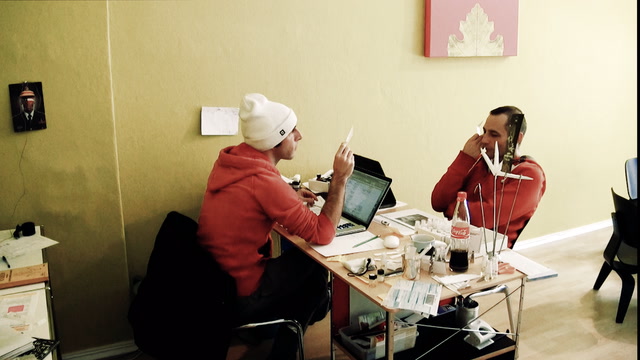
Facing A Brainiac2:14
A good briefing inspires and ignites a perfumer.
The development process for a new perfume involves coordination across various design disciplines: The creative director is not only responsible for the perfume’s name and theme. He is also in charge of preparing the perfume concept (or «brief») and coordinating the overall product fabrication. The photographer shoots the campaign photography. Packaging designers create the bottle, cap and box that will eventually house the perfume when it is finally displayed on the department store shelf. A writer composes press releases and other texts used to market the perfume. Finally, there are the perfumers who develop the fragrance. An additional challenge is that the above designers are often geographically dispersed throughout the world. How is organizing accomplished in such a context that requires coordination among all the designers? How come it does not impede their creative freedom?
In this case the independent designers and their sub-products are coordinated by means of a visual concept which consists of three collages, known as a «mood board.» A mood board is an aesthetic device that connects senses and emotion. It is able to encourage multiple conceptual interpretations while also having a directing and aligning effect. But do the perfumers really care about the concept? For Christophe it is clear that the concept goes beyond the technical brief that dictates raw materials and identifies a target consumer. The concept challenges the perfumer’s creativity. This clip reveals the perfumer’s personal attachment to the concept and its performative qualities: «It is a brainiac».
Back to origins1:40
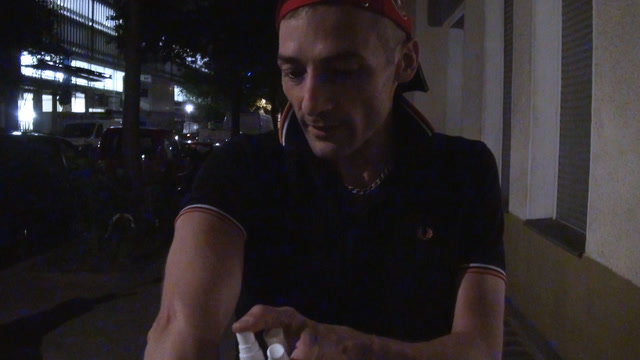
Back to origins1:40
Moving forward can actually imply going back to an earlier version.
In theory, the development process unfolds as incremental steps of improvement. In practice, however, progress is often less clear. This is particularly the case in cultural products that serve an aesthetic, rather than a clearly utilitarian purpose. Standards of quality for creative products derive from abstract ideas rather than clearly defined technical standards and performance features. Creative industries sell identities and experiences. Cultural goods «derive their value from subjective experiences that rely heavily on using symbols in order to manipulate perception and emotion». Consequently, a perfume is increasingly valued for its meaning. «I may like the grapefruit now again», Christophe remarks incidentally in this clip. He had just moved from working with blotters to evaluating selected scent modifications on his skin. Moving forward can actually imply going back to an earlier version.
Melt my heart0:50
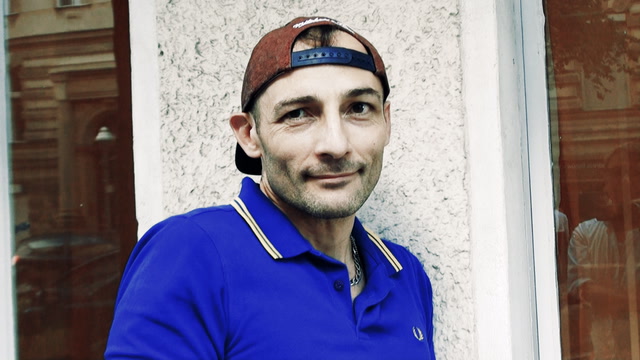
Melt my heart0:50
We witness a magical moment.
Christophe is putting his left hand on his chest. His eyes express true joy. The perfumer is almost bursting with pleasure while declaring his love for camomille. Christophe recalls the name Elizabeth Ganes, the founder of the high-quality brand StrangeLove NYC mentioned in her briefing: Melt my heart. At the same time the scent affects Christophe emotionally. He cannot control his feelings: Christophe literally embodies the claim: Melt my heart. In many cases a perfumer does not even know the name of the scent when creating. Does this little thing make a difference to the quality of the final composition? Based on this scene one might think so.
What’s missing on the pizza?2:09
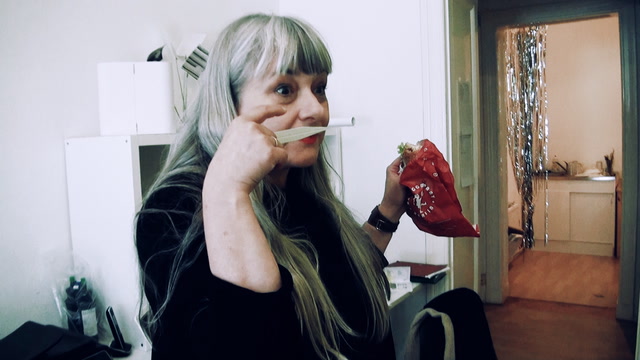
What’s missing on the pizza?2:09
«Imagine working in an open space while a neighboring workmate eats pizza!»
This was the experience we asked Christophe to capture with a scent. The pizza scent was later used in an exploratory study on the role of the sense of smell in the workplace. We knew that odors we encounter in everyday life are complex mixtures of different notes. Nevertheless, a few characteristic molecules are usually sufficient to evoke the generic smell substances, like coffee or chocolate. However, a generic smell can hardly capture a specific experience or workplace situation. In this session with Christophe, the assistant perfumer Ugo Charron and the scent journalist Denise Beaulieu we learn about the olfactory lifecycle of pizza.
The beauty contest1:50
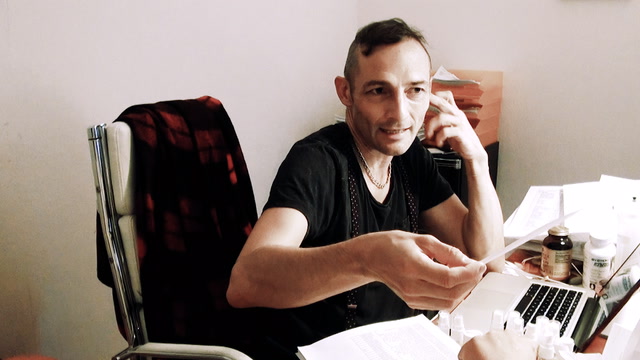
The beauty contest1:50
Longevity, projection and sillage is not the full story...
Following an experimental approach, the perfumer repeatedly needs to evaluate the results of his formula revisions. This clip zooms in on this specific situation. «This is gorgeous!». Christophe seems to be happy. We witness a deep satisfaction. The evaluation goes beyond longevity, projection and sillage – criteria that are often used to measure the technical performance of a perfume. All this might happen silently under the surface. However, what we see is the creator’s deep affection for his creation, as if he were treating it as an attractive person.
Evaluative moments2:33

Evaluative moments2:33
Three professionals engage in smelling and discussing an advanced modification of Meltmyheart, a fragrance by StrangeLove NYC.
We see how Christophe Laudamiel, Christoph Hornetz and the flavorist Marlene Staiger spontaneously share their impressions and associations. Apparently, there is no one way of evaluating a scent. A closer look reveals how micro-practices of smelling and using blotters can differ. Christophe is particularly interested how the other two experience a certain effect that he describes as «hot metal effect». The subtitles show how the three professionals cannot agree on what the dominant note of this scent smells like: caramel, coconut and hot metal stand next to each other. A shared interpretation of what they are actually smelling seems to be rather unimportant. Yet, something is achieved in this communication. It is neither explicit agreement nor disagreement. Instead it is the affective experience the three professionals express and collectively interpret as «good». And it is this affective experience that might be key to understanding how organizing is accomplished in a creative context. Is it possible that affects really constitute an organization?
Key quotes with this tag
Images with this tag
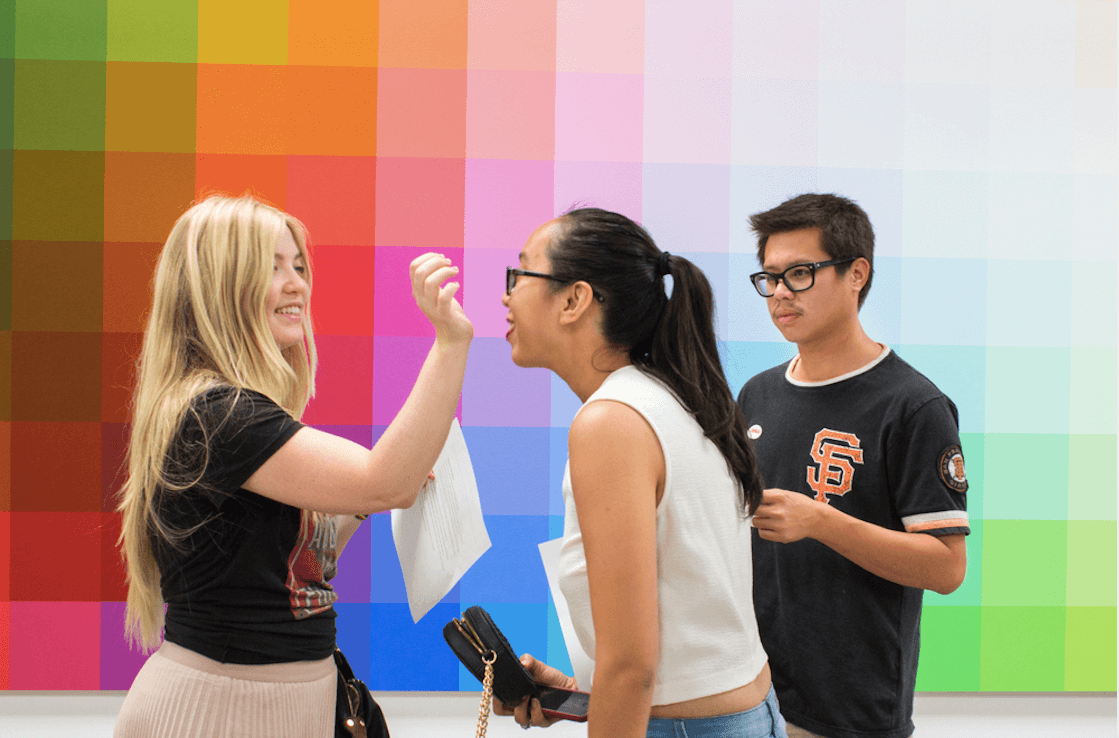
Courtesy: Brian Goeltzenleuchter
Visitors experiencing Sillage, an olfactory artwork by Brian Goeltzenleuchter in Santa Monica.
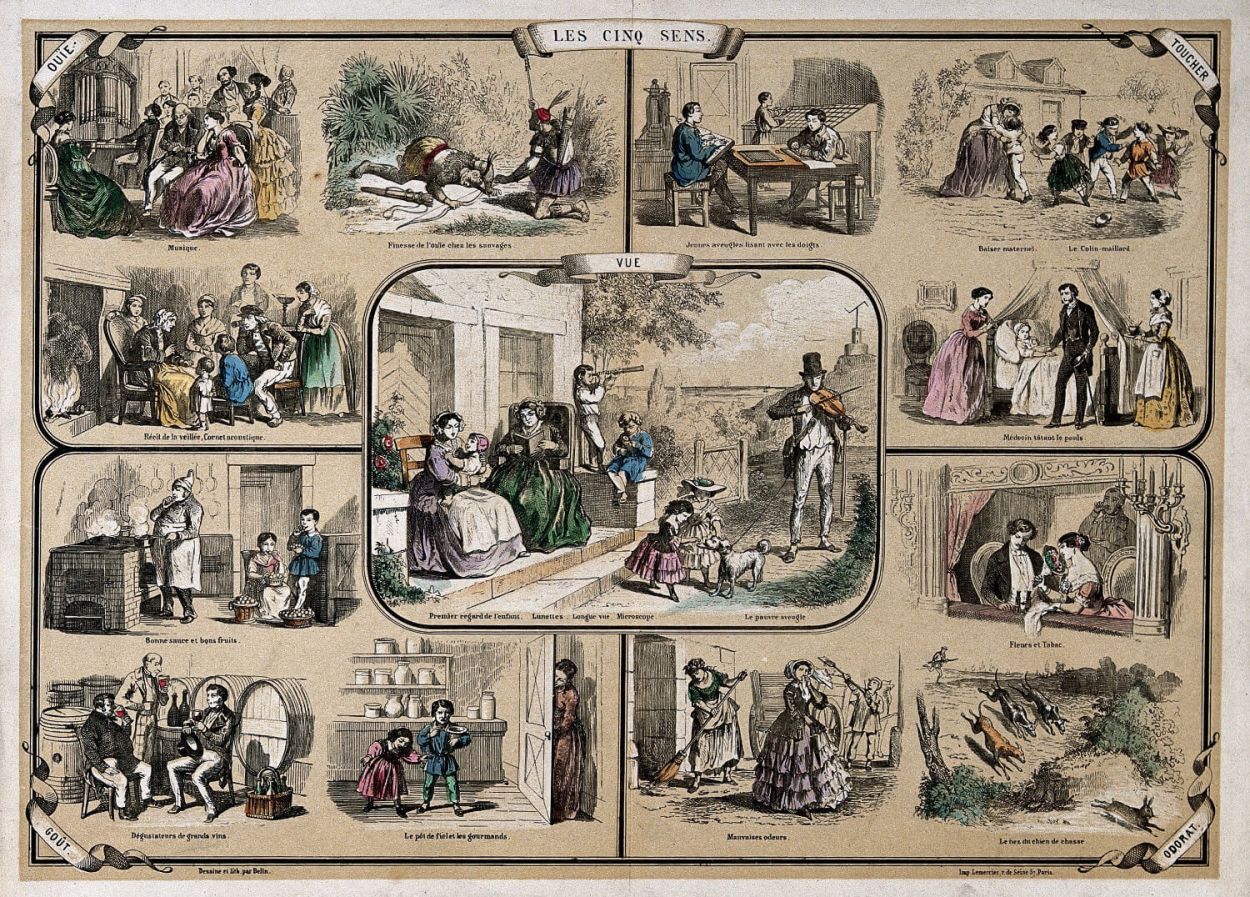
Wellcome Collection, Wellcome Library no. 46973i, CC BY 4.0
The five senses: sight, surrounded by vignettes showing the other senses coloured lithograph by Belin.
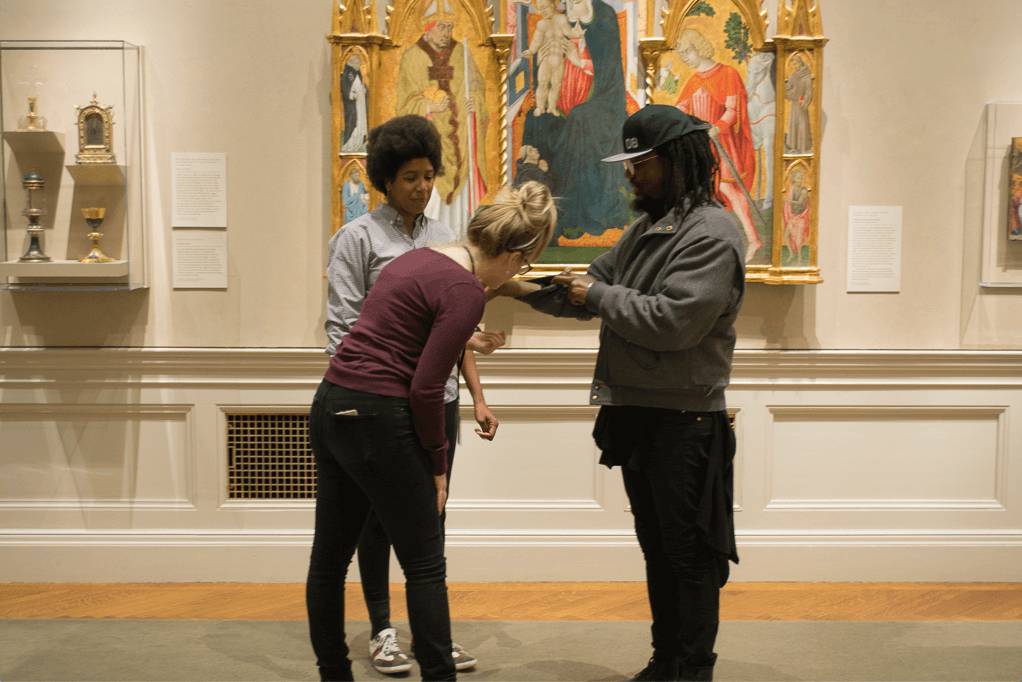
Courtesy: Brian Goeltzenleuchter: Patron Demographic Profile 2016.
Visitors experiencing Sillage, an olfactory artwork by Brian Goeltzenleuchter, at the Walters Art Museum, Baltimore.
All Tags
- Ambience
- Ambiguity
- Analogy
- Analyzing
- Artifact
- Associating
- Beyond words
- Briefing
- Christophe Laudamiel
- Classifying
- Consuming
- Creating
- Culture
- Deciding
- Desk work
- Embodiment
- Ephemeral
- Ethnography
- Evaluating
- Experimenting
- Hemingway
- Humiecki & Graef
- Industry
- Ingredient
- Interaction
- Labelling
- Laboratory
- Metal
- Modifications
- Mundane work
- Orange Flower
- Paper
- Presenting
- Sense-making
- Shalimar
- Smelling
- Storytelling
- Still life
- Strangelove NYC
- Translating
- Visual
- we are all children
- Words